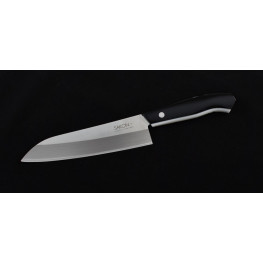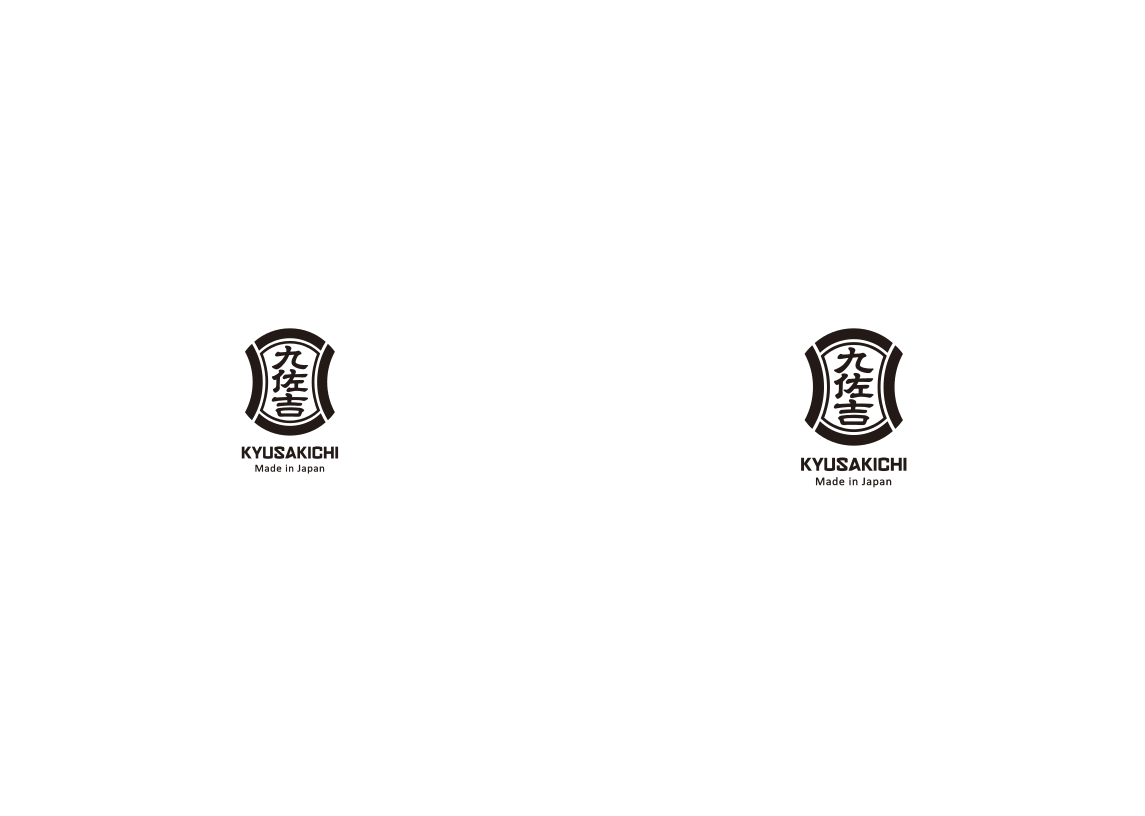Product detail
Where craftsmanship meets space technology, this is how Hokiyama Cuttlery presents its top model from the innovative Mugen line. The SAKON+ knife is often associated with labels such as shark tooth or rat tooth, but even more often with a confident statement: forget about sharpening. So what is the point?
Coating is not a revolutionary technology these days. But the patented Vee-Tech process used in the aviation industry is a completely different league. The result is a perfect fusion of materials, where there is no risk of unwanted separation. In this way, a narrow layer of ultra-hard carbide, again "borrowed" from the aviation industry, was applied to one side of the steel blade. Carbide forms micron protrusions forming invisible teeth. Compared to carbide, steel is a soft material and wears naturally during cutting. The more you cut, the more carbide "teeth" are exposed and the sharper the knife. And here is an explanation of the rat tooth name.
The fact that carbide is a fine material is evidenced due to its exceptional resistance to mechanical and thermal loads, therefore is widely used in the construction of spacecraft. But let's go back to the knives. The renowned British testing laboratory CATRA confirmed with its test that the decrease in sharpness of SAKON+ blades is many times slower than with conventional steel knives and even slower than with ceramic knives.
According to the manufacturer, while protecting the usual principles of using quality knives during daily home cutting, it is not necessary to sharpen the SAKON+ blade throughout the whole one year. From our own experience, we can confirm it is true. We take the results of CATRA, which are always accepted by the professional community, with full seriousness.
The result of Vee-Tech's patented technology is the creation of an alloy of carbide with steel. For the best understanding of the principle of the rat tooth can be used a microscopic view of the blade edge after 6 months of use without sharpening. If the Vee-Tech blade obviously has larger "teeth" for better cutting, the conventional steel blade is without any protrusions, therefore without the ability to cut.
I'm sure you will be asking yourself now: "What about after a year?" The charm of the Vee-Tech blade is that you can normally sharpen a knife on whetstones, of course from the steel side, not the carbide side.
It is logical that such revolutionary blades should not be combined with ordinary wooden handles. The choice therefore fell on the methacrylic resin known as synthetic marble. This material is free of pores and due to its excellent antibacterial and antifungal properties, it is also used for the production of kitchen sinks and worktops. Great emphasis was placed on exemplary ergonomics. The deep and rich transparency of the resin creates an elegant "cool" beauty. This is further enhanced by the contrasting black and white combination.
You can get SAKON+ in two practical versions. In addition to the popular multifunctional santoku knife, it is a utility petty knife.
https://www.youtube.com/watch?v=8NOGf7eI9-E
©2010-2018 Copyright Roman Ulík, Nippon Knives, www.japonskenoze.sk,all rights reserved. Photos and texts are protected by copyright, and their use is not possible without the consent of the author.
About producer

Tosa is the ancient name of today's Kochi Prefecture, which is located in the southern part of the island of Shikoku. The north of the prefecture is made up of inhospitable mountains, which towards the south pass into a fertile plain filled with countless rice fields. They are protected from possible tsunami waves by barriers built on the beaches of the Pacific Ocean. Connoisseurs of Japanese blacksmithing will not call this area anything other than Tosa.
For more than 800 years, the interlaced steel made famous by samurai swords has been forged in Tosa. It can be said that this area has become a kind of "open-air museum" of traditional blacksmithing. You will find small workshops scattered here, in which individual family generations create gems that are incomprehensible to us. It is almost a rule that father and son work in the workshop to ensure the continuity of the tradition. All kinds of blades are made here, from agricultural tools to rare knives, but in a diametrically different way than in the Seki, Sakai, or Tsubame/Sanjo areas. Knives intended for decoration were never produced here, but durable work tools. That is why knives from Tosa are sought after by connoisseurs all over the world.
Since 1919, the Hokiyama Cutlery company has been among the pioneers in improving the traditional production of kitchen knives. In accordance with the motto "the good must be preserved and, if possible, also improved", Shinsuke Hokiyama created 3 lines in his company: traditional, practical and innovative.
The traditional line /Tosa-Ichi/ consists of hand-forged blades from such masters as Takeo Murata. It is a layered steel, the core of which is high-carbon shirogami or aogami type steel. Hitachi Blue Super is used for the best pieces. The blades are most often in the unpolished form of kurouchi. Knives require care, as this material is not anti-corrosive. The practical line /Sakon/ is a symbiosis of traditional production procedures with modern materials and design. In addition to high-carbon steel, very hard powder tool steel and damascene steel are also used. Emphasis is placed on precisely processed and ergonomically tuned handles. The innovative line /Mugen/ is the pride of Hokiyama Cutlery. It adopts advances from other fields into the production of its knives. These are mainly self-sharpening knives SAKON+ with the patented Vee-Tech technology taken from the aviation and space industry.
Friendly relations with the owner of Hokiyama Cutlery, Mr. Shinsuke Hokiyama, enabled us to gradually bring you the most interesting knives from the legendary Tosa region.
©2010-2018 Copyright Roman Ulík, Nippon Knives, www.japonskenoze.sk all rights reserved.
Photos and texts are protected by copyright law and their use without the author's consent is not possible.


 Sign in
Sign in Registration
Registration


































